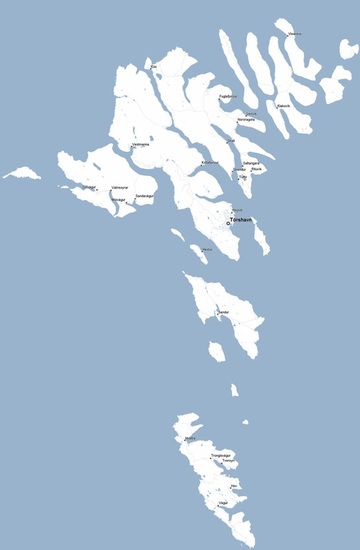Located halfway between Norway and Iceland, this territory has been depending on Denmark for quite some time. It's more famous, though, for being the first stepping stones beyond the Scottish archipelago of the Shetlands for the Viking diaspora that culminated in the European discovery of continental North America in the 11th century, about 400 or 500 years before Christopher Columbus made his famous voyage.
However, it is now gaining researcher's attention the theory that the Vikings were not the first settlers on these islands... And scientists are don't know who actually were. Archaeologists claim that there are hints of earlier arrivals there - for example, in about 825, the Irish monk Dicuil in the court of Charlemagne wrote of Irish hermits settling islands beforehand that may have been the Faroes. Stories aside, there is evidence of the human colonization of the islands by people some 300 to 500 years before the large-scale Viking colonization of the ninth century. The investigation of the archaeological site of Á Sondum on the island of Sandoy revealed an extensive windblown sand deposit containing patches of burnt peat ash from human activity. This ash contained barley grains burnt in domestic hearths, which carbon dating showed was pre-Viking. Barley is not indigenous to the Faroes, so it must have been either grown or brought to the islands by humans.
Humans would have spread these ashes onto the sands during the fourth to sixth centuries and sixth to eighth centuries. This practice was often seen in the North Atlantic region among Europeans during this period to stabilize the dunes and keep the wind from eroding them away.
The hardest part of the study, though, is that researchers believe the Vikings destroyed much of the evidence of the earlier settlers. Their hope is to find intact evidence which may help them "blame" someone. The possible explorers so far are: religious hermits from Ireland, late-Iron Age colonists from Scotland or pre-Viking explorers from Scandinavia.
I'm betting on aliens.
However, it is now gaining researcher's attention the theory that the Vikings were not the first settlers on these islands... And scientists are don't know who actually were. Archaeologists claim that there are hints of earlier arrivals there - for example, in about 825, the Irish monk Dicuil in the court of Charlemagne wrote of Irish hermits settling islands beforehand that may have been the Faroes. Stories aside, there is evidence of the human colonization of the islands by people some 300 to 500 years before the large-scale Viking colonization of the ninth century. The investigation of the archaeological site of Á Sondum on the island of Sandoy revealed an extensive windblown sand deposit containing patches of burnt peat ash from human activity. This ash contained barley grains burnt in domestic hearths, which carbon dating showed was pre-Viking. Barley is not indigenous to the Faroes, so it must have been either grown or brought to the islands by humans.
Humans would have spread these ashes onto the sands during the fourth to sixth centuries and sixth to eighth centuries. This practice was often seen in the North Atlantic region among Europeans during this period to stabilize the dunes and keep the wind from eroding them away.
The hardest part of the study, though, is that researchers believe the Vikings destroyed much of the evidence of the earlier settlers. Their hope is to find intact evidence which may help them "blame" someone. The possible explorers so far are: religious hermits from Ireland, late-Iron Age colonists from Scotland or pre-Viking explorers from Scandinavia.
I'm betting on aliens.
~Ally

 RSS Feed
RSS Feed